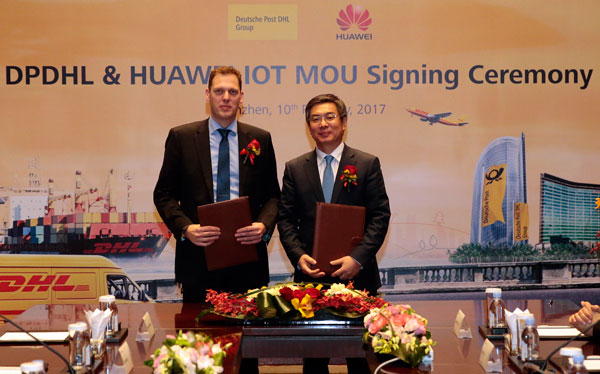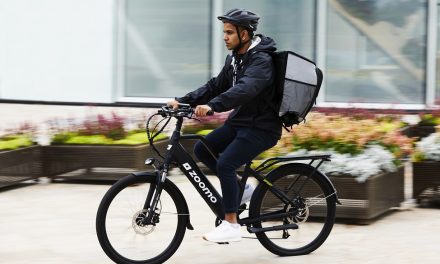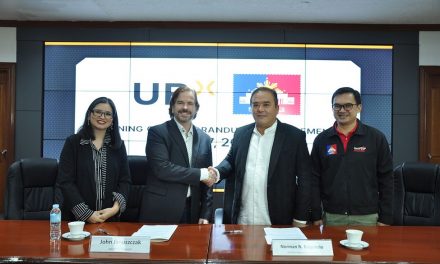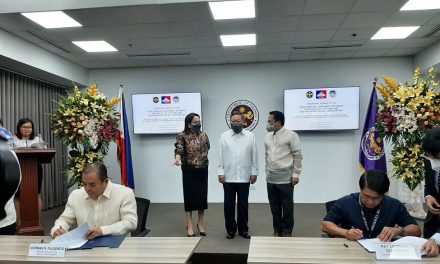
Huawei and Deutsche Post DHL agree IoT partnership

Huawei Technologies and Deutsche Post DHL Group have signed a Memorandum of Understanding (MOU) to develop a range of supply chain solutions for customers using industrial-grade Internet of Things (IoT) hardware and infrastructure. Under the MOU, Huawei and Deutsche Post DHL Group will collaborate on innovation projects focusing on cellular-based IoT technology, which can connect large volumes of devices across long distances with minimal power consumption.
According to Deutsche Post DHL: “The greater connectivity can deliver a more integrated logistics value chain by providing critical data and visibility in warehousing operations, freight transportation, and last-mile delivery.”
Dr. Markus Voss, Global COO & CIO, DHL Supply Chain, said: “Spending on connected logistics solutions is expected to more than double between now and 2020, and many logistics providers including Deutsche Post DHL Group have already begun to explore Internet of Things applications in their supply chains, including everything from enhanced asset tracking to driverless delivery vehicles.
“This MOU will allow both Huawei and Deutsche Post DHL Group to tackle complex operational and business challenges with a powerful combination of world-class Internet of Things hardware, networks, and expertise in end-to-end supply chain management.”
The MOU will see Huawei make its IoT devices, connectivity experts, and network infrastructure accessible to Deutsche Post DHL Group, so the logistics company use them in its warehousing, freight, and last-mile delivery services.
Huawei and Deutsche Post DHL Group will also work together to market and commercialize the results of their innovations, including pilot commercial projects in Europe and China.
Deutsche Post DHL added: “The initial forays into the Internet of Things for DHL include the launch of the €90 million Advanced Regional Center in Singapore last year, featuring almost-entirely automated picking and storing infrastructure that performs 20 per cent more efficiently than manual approaches.”












